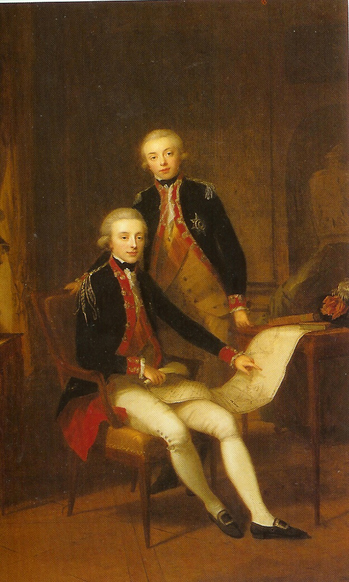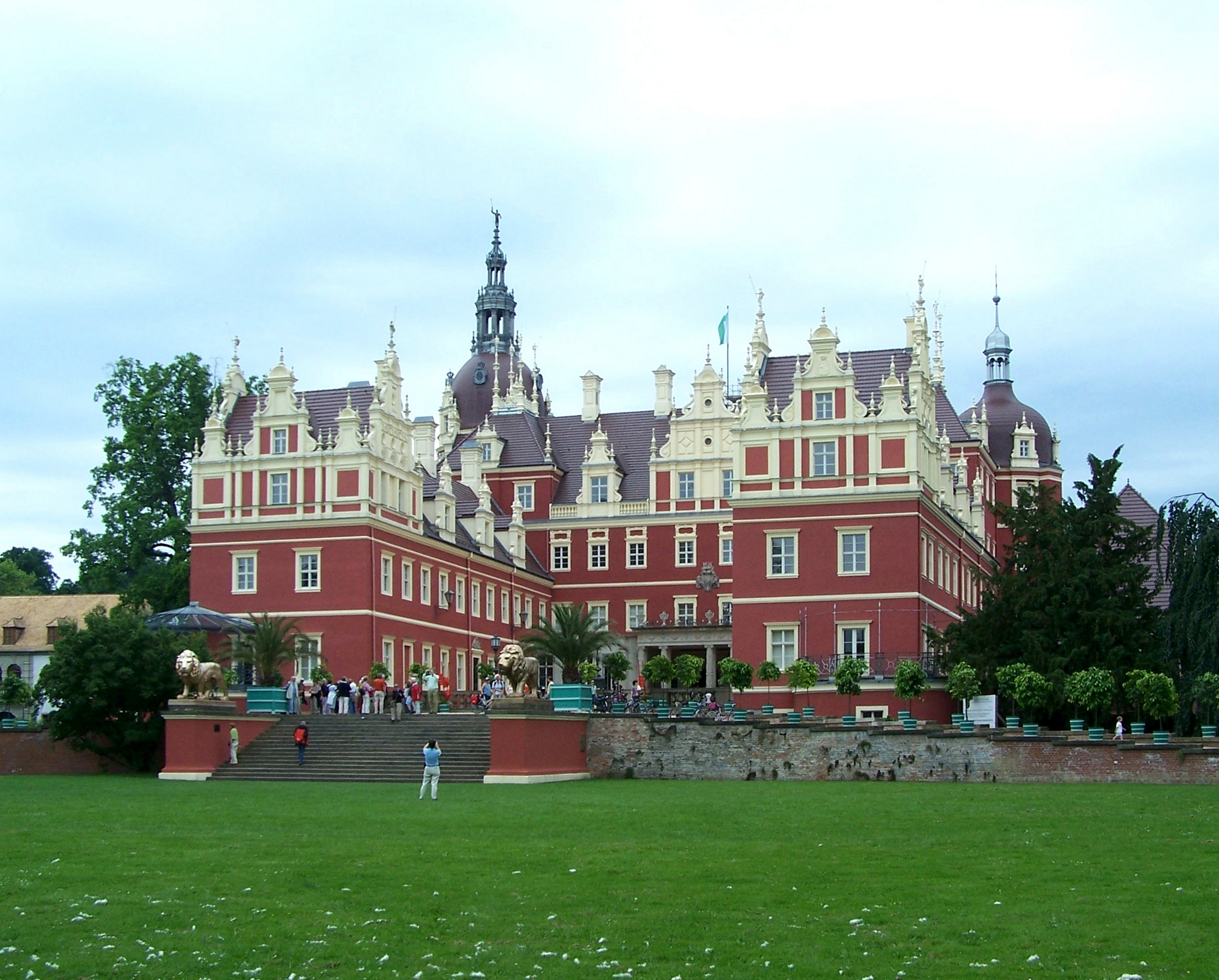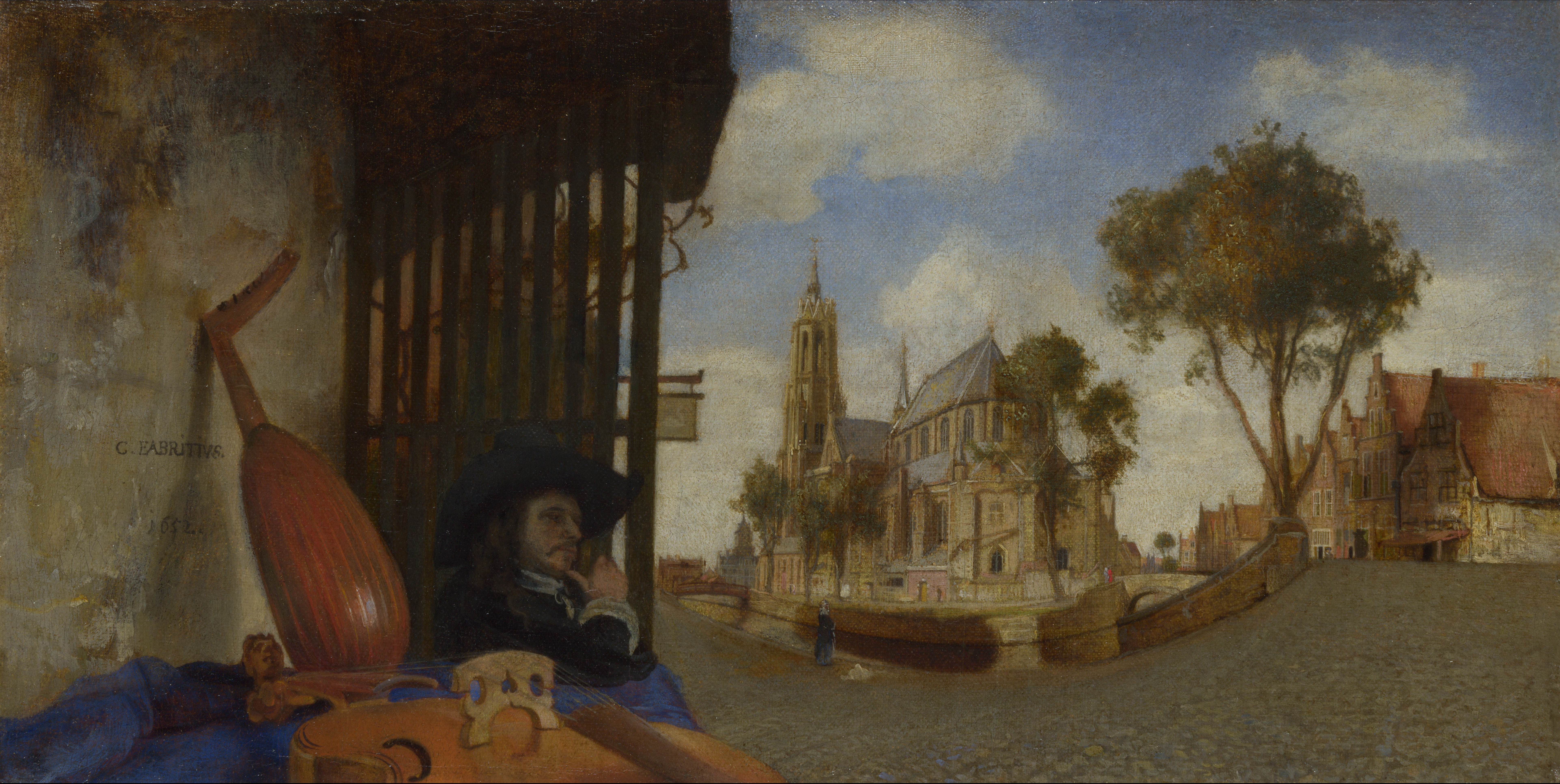|
King William I Of The Netherlands
William I (Willem Frederik, Prince of Orange-Nassau; 24 August 1772 – 12 December 1843) was a Prince of Orange, the King of the Netherlands and Grand Duke of Luxembourg. He was the son of the last Stadtholder of the Dutch Republic, who went into exile to London in 1795 because of the Batavian Revolution. As compensation for the loss of all his father's possessions in the Low Countries, an agreement was concluded between France and Prussia in which William was appointed ruler of the newly created Principality of Nassau-Orange-Fulda in 1803; this was however short-lived and in 1806 he was deposed by Napoleon. With the death of his father in 1806, he became Prince of Orange and ruler of the Principality of Orange-Nassau, which he also lost the same year after the dissolution of the Holy Roman Empire and subsequent creation of the Confederation of the Rhine at the behest of Napoleon. In 1813, when Napoleon was defeated at the Battle of Leipzig, the Orange-Nassau territories were ... [...More Info...] [...Related Items...] OR: [Wikipedia] [Google] [Baidu] |
Joseph Paelinck
Joseph Paelinck, (20 March 1781 – 19 June 1839) was a painter from the Southern Netherlands. Biography Paelinck attended the Royal Academy of Fine Arts (Ghent) and then with Jacques-Louis David in Paris, where he painted in 1804 ''A Judgment of Paris'', which earned him his first Academy Art Award for Ghent. After he had worked there a short time as a teacher, he went to Rome and stayed there for five years. He painted, among other things: ''Rome under Augustus'' for the Quirinal Palace and the ''Discovery of the Cross'' for St. Michael's Church in Ghent. He was later a professor at the Académie royale de peinture et de sculpture in Brussels. His many pupils included Charles Baugniet, François Antoine Bodumont, Edouard de Bièfve, Élisa de Gamond, Félix De Vigne, Jean Joseph Geens, Jozef Geirnaert, Joseph Meganck, Fanny Paelinck-Horgnies, Alfred Stevens, Joseph Cohen de Vries and Abraham Johannes Zeeman. [...More Info...] [...Related Items...] OR: [Wikipedia] [Google] [Baidu] |
Prince Frederick Of The Netherlands
Prince Frederick of the Netherlands, Prince of Orange-Nassau (full names: Willem Frederik Karel; 28 February 1797, in Berlin – 8 September 1881, in Wassenaar), was the second son of William I of the Netherlands and his wife, Wilhelmine of Prussia. Early life The prince grew up at the court of his grandfather Frederick William II of Prussia and uncle Frederick William III of Prussia. One of his tutors was Carl von Clausewitz. Aged 16, the prince fought in the Battle of Leipzig. The prince first entered the Netherlands in December 1813. As he spoke no Dutch, the prince was sent to Leiden University to get a further education. He was also educated by Karl Ludwig von Phull in The Hague. When Napoleon returned from Elba, during the Hundred Days the prince was given command of a detachment of Wellington's army which was posted in a fall back position near Braine-le-Comte should the battle taking place at Waterloo be lost. Prince of the Netherlands Based on a house treaty, Frederi ... [...More Info...] [...Related Items...] OR: [Wikipedia] [Google] [Baidu] |
Prince Of Orange
Prince of Orange (or Princess of Orange if the holder is female) is a title originally associated with the sovereign Principality of Orange, in what is now southern France and subsequently held by sovereigns in the Netherlands. The title "Prince of Orange" was created in 1163 by the Emperor Frederick Barbarossa, by elevating the county of Orange to a principality, in order to bolster his support in that area in his conflict with the Papacy. The title and land passed to the French noble houses of Baux, in 1173, and of Chalons, in 1393, before arriving with Rene of Nassau in 1530. The principality then passed to a Dutch nobleman, Rene's cousin William (known as "the Silent"), in 1544. In 1702, after William the Silent's great-grandson William III of England died without children, a dispute arose between his cousins, Johan Willem Friso and Frederick I of Prussia. In 1713, under the Treaty of Utrecht Frederick William I of Prussia ceded the Principality of Orange to King ... [...More Info...] [...Related Items...] OR: [Wikipedia] [Google] [Baidu] |
Dutch Reformed Church
The Dutch Reformed Church (, abbreviated NHK) was the largest Christian denomination in the Netherlands from the onset of the Protestant Reformation in the 16th century until 1930. It was the original denomination of the Dutch Royal Family and the foremost Protestant denomination until 2004. It was the larger of the two major Reformed denominations, after the Reformed Churches in the Netherlands (''Gereformeerde kerk'') was founded in 1892. It spread to the United States, South Africa, Indonesia, Sri Lanka, Brazil, and various other world regions through Dutch colonization. Allegiance to the Dutch Reformed Church was a common feature among Dutch immigrant communities around the world and became a crucial part of Afrikaner nationalism in South Africa. The Dutch Reformed Church was founded in 1571 during the Protestant Reformation in the Calvinist tradition, being shaped theologically by John Calvin, but also other major Reformed theologians. The church was influenced by vari ... [...More Info...] [...Related Items...] OR: [Wikipedia] [Google] [Baidu] |
Delft
Delft () is a List of cities in the Netherlands by province, city and Municipalities of the Netherlands, municipality in the Provinces of the Netherlands, province of South Holland, Netherlands. It is located between Rotterdam, to the southeast, and The Hague, to the northwest. Together with them, it is part of both the Rotterdam–The Hague metropolitan area and the Randstad. Delft is a popular tourist destination in the Netherlands, famous for its historical connections with the reigning House of Orange-Nassau, for its Delftware, blue pottery, for being home to the painter Johannes Vermeer, Jan Vermeer, and for hosting Delft University of Technology (TU Delft). Historically, Delft played a highly influential role in the Dutch Golden Age. In terms of science and technology, thanks to the pioneering contributions of Antonie van Leeuwenhoek and Martinus Beijerinck, Delft can be considered to be the birthplace of microbiology. History Early history The city of Delft came into ... [...More Info...] [...Related Items...] OR: [Wikipedia] [Google] [Baidu] |
Nieuwe Kerk (Delft)
The Nieuwe Kerk (; en, New Church) is a Protestant church in the city of Delft in the Netherlands. The building is located on Delft Market Square (Markt), opposite to the City Hall (Dutch: ''Stadhuis''). In 1584, William the Silent was entombed here in a mausoleum designed by Hendrick and Pieter de Keyser. Since then members of the House of Orange-Nassau have been entombed in the royal crypt. The latest are Queen Juliana and her husband Prince Bernhard in 2004. The private royal family crypt is not open to the public. The church tower, with the most recent recreation of the spire which was designed by Pierre Cuypers and completed in 1872, is the second highest in the Netherlands, after the Domtoren in Utrecht. History The New Church, formerly the church of St. Ursula (14th century), is the burial place of the princes of Orange. The church is remarkable for its fine tower and chime of bells, and contains the splendid allegorical monument of William the Silent, crafted by Hen ... [...More Info...] [...Related Items...] OR: [Wikipedia] [Google] [Baidu] |
Kingdom Of Prussia
The Kingdom of Prussia (german: Königreich Preußen, ) was a German kingdom that constituted the state of Prussia between 1701 and 1918.Marriott, J. A. R., and Charles Grant Robertson. ''The Evolution of Prussia, the Making of an Empire''. Rev. ed. Oxford: Clarendon Press, 1946. It was the driving force behind the unification of Germany in 1871 and was the leading state of the German Empire until its dissolution in 1918. Although it took its name from the region called Prussia, it was based in the Margraviate of Brandenburg. Its capital was Berlin. The kings of Prussia were from the House of Hohenzollern. Brandenburg-Prussia, predecessor of the kingdom, became a military power under Frederick William, Elector of Brandenburg, known as "The Great Elector". As a kingdom, Prussia continued its rise to power, especially during the reign of Frederick II, more commonly known as Frederick the Great, who was the third son of Frederick William I.Horn, D. B. "The Youth of Frederick ... [...More Info...] [...Related Items...] OR: [Wikipedia] [Google] [Baidu] |
Berlin
Berlin ( , ) is the capital and largest city of Germany by both area and population. Its 3.7 million inhabitants make it the European Union's most populous city, according to population within city limits. One of Germany's sixteen constituent states, Berlin is surrounded by the State of Brandenburg and contiguous with Potsdam, Brandenburg's capital. Berlin's urban area, which has a population of around 4.5 million, is the second most populous urban area in Germany after the Ruhr. The Berlin-Brandenburg capital region has around 6.2 million inhabitants and is Germany's third-largest metropolitan region after the Rhine-Ruhr and Rhine-Main regions. Berlin straddles the banks of the Spree, which flows into the Havel (a tributary of the Elbe) in the western borough of Spandau. Among the city's main topographical features are the many lakes in the western and southeastern boroughs formed by the Spree, Havel and Dahme, the largest of which is Lake Müggelsee. Due to its l ... [...More Info...] [...Related Items...] OR: [Wikipedia] [Google] [Baidu] |
Dutch Republic
The United Provinces of the Netherlands, also known as the (Seven) United Provinces, officially as the Republic of the Seven United Netherlands (Dutch: ''Republiek der Zeven Verenigde Nederlanden''), and commonly referred to in historiography as the Dutch Republic, was a federal republic that existed from 1579, during the Dutch Revolt, to 1795 (the Batavian Revolution). It was a predecessor state of the Netherlands and the first fully independent Dutch nation state. The republic was established after seven Dutch provinces in the Spanish Netherlands revolted against rule by Spain. The provinces formed a mutual alliance against Spain in 1579 (the Union of Utrecht) and declared their independence in 1581 (the Act of Abjuration). It comprised Groningen, Frisia, Overijssel, Guelders, Utrecht, Holland and Zeeland. Although the state was small and contained only around 1.5 million inhabitants, it controlled a worldwide network of seafaring trade routes. Through its tradin ... [...More Info...] [...Related Items...] OR: [Wikipedia] [Google] [Baidu] |
The Hague
The Hague ( ; nl, Den Haag or ) is a city and municipality of the Netherlands, situated on the west coast facing the North Sea. The Hague is the country's administrative centre and its seat of government, and while the official capital of the Netherlands is Amsterdam, The Hague has been described as the country's de facto capital. The Hague is also the capital of the province of South Holland, and the city hosts both the International Court of Justice and the International Criminal Court. With a population of over half a million, it is the third-largest city in the Netherlands, after Amsterdam and Rotterdam. The Hague is the core municipality of the Greater The Hague urban area, which comprises the city itself and its suburban municipalities, containing over 800,000 people, making it the third-largest urban area in the Netherlands, again after the urban areas of Amsterdam and Rotterdam. The Rotterdam–The Hague metropolitan area, with a population of approximately 2.6&n ... [...More Info...] [...Related Items...] OR: [Wikipedia] [Google] [Baidu] |
Huis Ten Bosch
Huis ten Bosch ( nl, Paleis Huis ten Bosch, ; English: "House in the Woods") is a royal palace in The Hague, Netherlands. It is one of three official residences of the Dutch monarch; the two others being the Noordeinde Palace in The Hague and the Royal Palace in Amsterdam. Huis ten Bosch was the home of Queen Beatrix from 1981 to her abdication in 2014; King Willem-Alexander and his family moved in on 13 January 2019. A replica of the palace was built in Sasebo, Japan, in a theme park bearing the same name. History 17th and 18th century Construction of Huis ten Bosch began on 2 September 1645, under the direction of Bartholomeus Drijffhout,Stenvert, R. et al. (2004). ''Monumenten in Nederland: Zuid-Holland'', p. 227–228. Zwolle: Waanders Uitgevers. . and to a design by Pieter Post and Jacob van Campen. It was commissioned by Amalia of Solms-Braunfels, the wife of stadtholder Frederick Henry, on a parcel of land granted to her by the States General (Loonstra 1983, Slot ... [...More Info...] [...Related Items...] OR: [Wikipedia] [Google] [Baidu] |
Wilhelmina Of Prussia, Princess Of Orange
Princess Wilhelmina of Prussia (''Frederika Sophia Wilhelmina''; 7 August 1751 in Berlin – 9 June 1820 in Het Loo) was the consort of William V of Orange and the de facto leader of the dynastic party and counter-revolution in the Netherlands. She was the daughter of Prince Augustus William of Prussia and Duchess Luise of Brunswick-Wolfenbüttel. Wilhelmina was the longest-serving Princess consort of Orange. Background Wilhelmina was brought up by her grandmother. On 4 October 1767 in Berlin, she was married to William V of Orange, the last Dutch Stadtholder. Duke Louis Ernest was instrumental in arranging the marriage of Prince William V with his niece. He immediately observed that the princess craved joint rule, and so was starting to undermine Louis Ernest's dominant position. In long letters she complained about him to her other uncle, King Frederick II of Prussia. As a person, she was proud and politically ambitious; as a princess consort, she dominated her spouse and ... [...More Info...] [...Related Items...] OR: [Wikipedia] [Google] [Baidu] |








